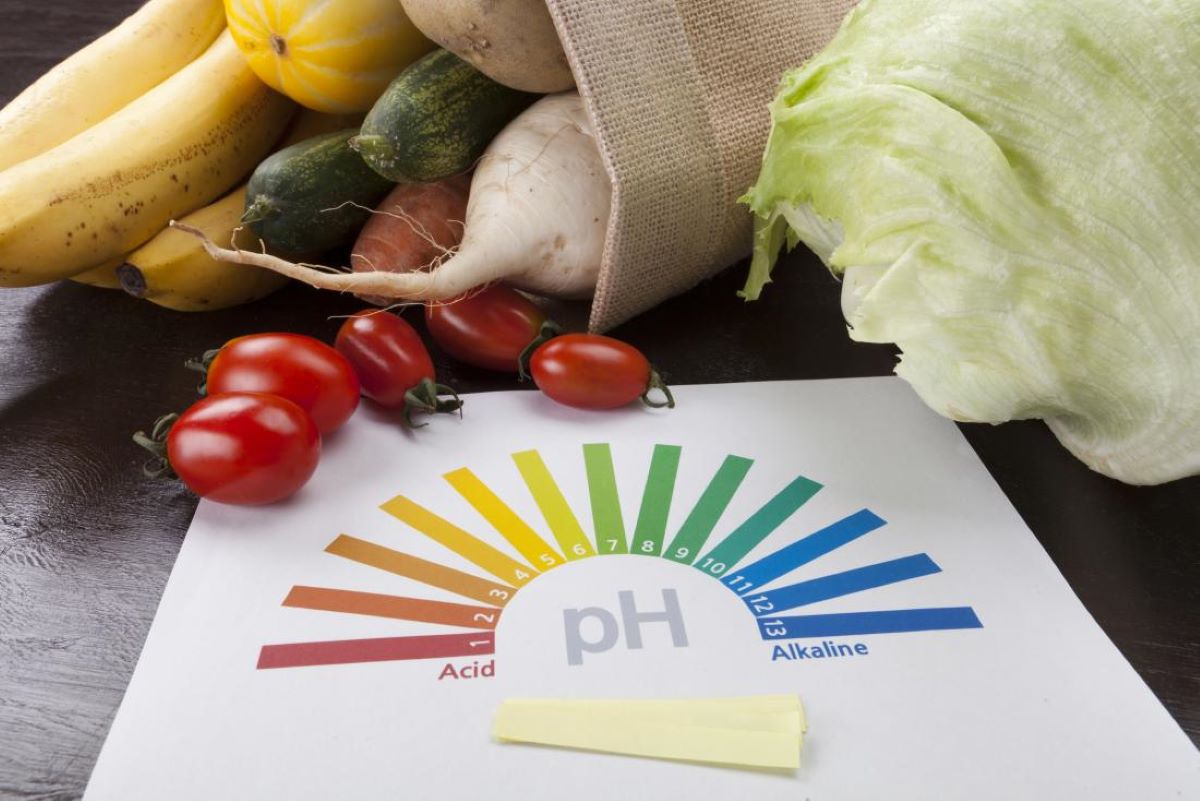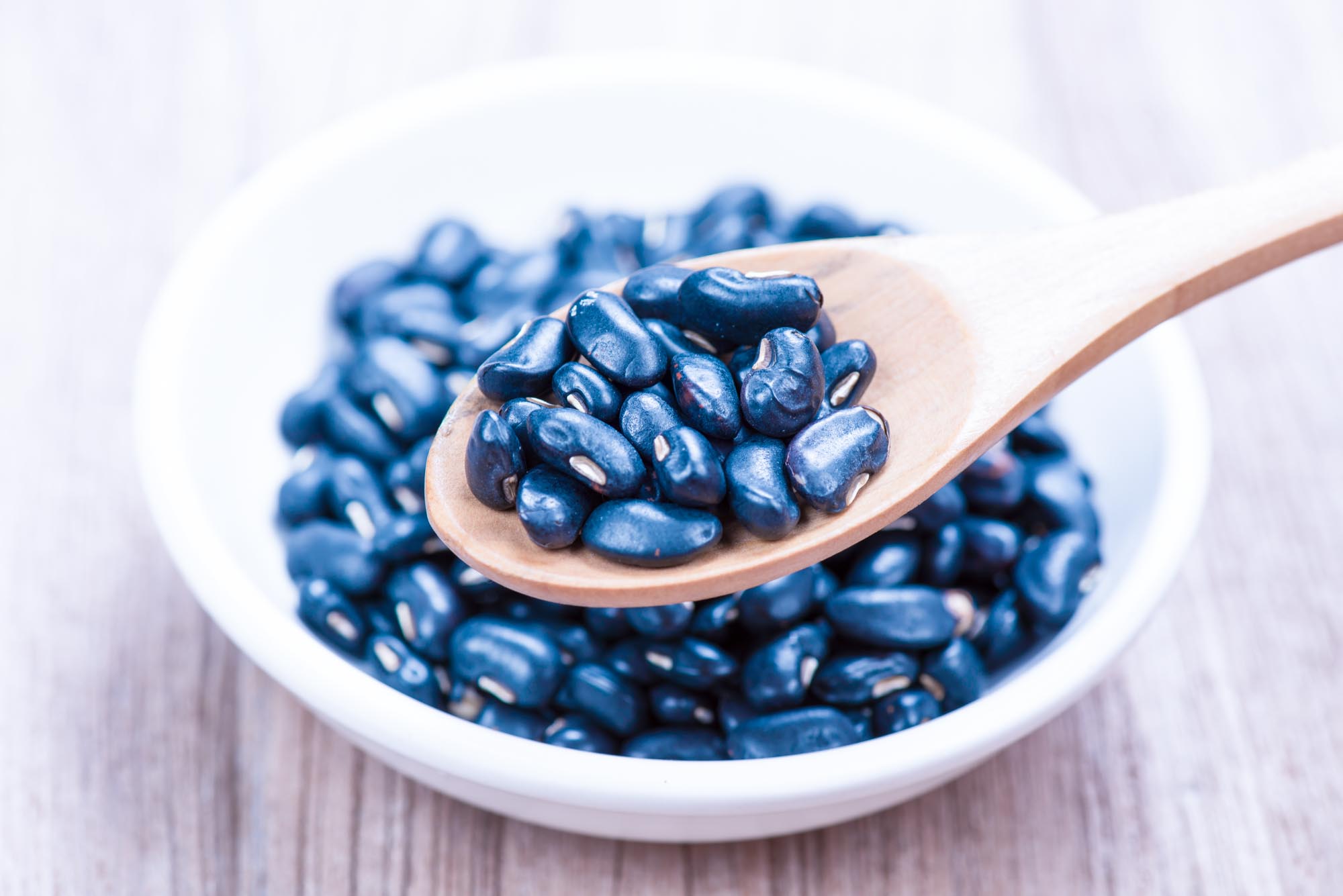Home>Gardening News and Trends>Latest News>What Vegetables Are Acidic


Latest News
What Vegetables Are Acidic
Modified: January 22, 2024
Discover the latest news on acidic vegetables and their impact on your health. Find out which vegetables have high acidity levels and how to incorporate them into your diet for optimum nutrition.
(Many of the links in this article redirect to a specific reviewed product. Your purchase of these products through affiliate links helps to generate commission for Chicagolandgardening.com, at no extra cost. Learn more)
Table of Contents
Introduction
Eating a balanced diet rich in fruits and vegetables is essential for maintaining optimal health. While most people focus on the nutritional benefits of vegetables, it’s also important to consider their acidity levels. Acidity in vegetables can have an impact on our overall pH balance and digestive health. Understanding which vegetables are acidic and how to incorporate them into our diet is key to achieving a well-rounded approach to nutrition.
When we talk about acidity in relation to vegetables, we’re referring to their pH levels. The pH scale ranges from 0 to 14, with 0 being highly acidic, 7 being neutral, and 14 being highly alkaline. While the body naturally maintains a slightly alkaline pH, the foods we consume can influence this balance.
In this article, we will explore the concept of acidity in vegetables and provide a comprehensive guide to understanding which vegetables are acidic and how to incorporate them into our meals. We will also discuss the potential health benefits and ways to balance acidity in our overall diet.
It’s important to note that acidity in vegetables does not necessarily mean that they should be avoided. Many acidic vegetables have numerous health benefits and play a crucial role in our diet. The key is learning how to balance acidity and incorporate a variety of vegetables into our meals to ensure a well-rounded nutritional intake.
Understanding the acidity levels of vegetables and how they can affect our health is an important aspect of maintaining a balanced diet. So, let’s delve deeper into the world of acidic vegetables and discover how to make the most of them.
Understanding Acidity in Vegetables
Acidity in vegetables refers to the level of acidity measured on the pH scale. The pH scale ranges from 0 to 14, with 0 being highly acidic, 7 being neutral, and 14 being highly alkaline. Understanding the acidity of vegetables is important as it can affect our digestive health, nutrient absorption, and overall pH balance.
When we consume acidic foods, our bodies work to maintain a slightly alkaline pH level. This delicate balance is necessary for optimal functioning of various bodily systems. While our bodies have mechanisms to regulate pH levels, consistently consuming highly acidic foods can lead to an imbalance, potentially causing digestive issues and other health concerns.
In the context of vegetables, acidity can be influenced by various factors, including the plant’s natural composition and growing conditions. Some vegetables naturally have higher acidity levels due to their inherent characteristics. Additionally, the processing methods used, such as cooking or fermenting, can also affect the acidity.
It’s important to note that the acidity of vegetables does not necessarily determine their overall nutritional value. Many acidic vegetables are packed with essential vitamins, minerals, and antioxidants that contribute to overall health benefits. The key is to understand the acidity levels of different vegetables and find a balance in our overall diet.
Acidity can also impact the taste of vegetables. Acidic vegetables often have a tangy or sour flavor, which can add a refreshing element to meals. However, the intensity of acidity varies among different vegetables, and some may be too acidic for certain palates. It’s essential to understand the individual preferences and sensitivities of oneself and others when incorporating acidic vegetables into meals.
In the next section, we will explore specific vegetables and their pH levels to gain a better understanding of which vegetables are categorized as acidic. By understanding the acidity levels of different vegetables, we can make informed choices when planning our meals and ensure a balanced and diverse diet.
Acidic Vegetables and Their pH Levels
Now that we have a better understanding of acidity in vegetables, let’s explore some examples of acidic vegetables and their corresponding pH levels. It’s important to note that pH levels can vary slightly depending on factors such as ripeness, cultivation methods, and cooking techniques. However, the following pH ranges give an indication of the relative acidity of these vegetables.
1. Tomatoes – Tomatoes are one of the most popular and versatile acidic vegetables. They have a pH range of 4.3 to 4.9. Tomatoes can be enjoyed raw, cooked, or in various forms such as sauces, soups, and salads.
2. Citrus Fruits – Citrus fruits, including lemons, limes, oranges, and grapefruits, are known for their high acidity. Lemons have a pH level of around 2, while oranges and grapefruits have a pH range of 3 to 4. These fruits add a tangy and refreshing flavor to dishes and are commonly used in drinks, dressings, and desserts.
3. Pickles – Pickles are cucumbers that have been fermented or brined in a solution of vinegar, water, and spices. The acidity of pickles can vary depending on the brine used, but they typically have a pH range of 3.2 to 4.6. Pickles are often enjoyed as a condiment or added to sandwiches and salads.
4. Peppers – Certain types of peppers, such as bell peppers, have a relatively low acidity level with a pH range of 4.6 to 5.4. However, hot peppers, including jalapenos and chili peppers, can have a higher acidity level with a pH range of 2.8 to 4.8. Peppers can be consumed raw, cooked, or used as a flavor enhancer in various dishes.
5. Sauerkraut – Sauerkraut is fermented cabbage with a tangy flavor. It has a pH range of 3.5 to 4.2. The fermentation process not only boosts its acidity but also enhances its probiotic content, making it beneficial for gut health. Sauerkraut is commonly used in dishes like sausages and sandwiches.
These are just a few examples of acidic vegetables, but there are many others, such as cranberries, rhubarb, and certain types of greens. It’s important to consider the acidity levels of these vegetables when planning meals, especially for individuals with sensitive stomachs or certain medical conditions.
It’s worth mentioning that while acidic vegetables may seem overwhelming, they can still be enjoyed in moderation as part of a balanced diet. Incorporating a variety of vegetables, including both acidic and alkaline options, ensures that we receive a diverse range of nutrients and flavors.
Now that we know which vegetables fall under the acidic category, let’s explore how we can cook and consume them while maintaining a balance in our overall diet.
Cooking and Consuming Acidic Vegetables
Cooking and consuming acidic vegetables can be an enjoyable and healthy experience with a few key considerations. Here are some tips on how to incorporate these vegetables into your meals while maintaining balance and optimal nutrition.
1. Raw Consumption: Acidic vegetables can be consumed raw, providing a refreshing and tangy addition to salads, wraps, and sandwiches. Raw tomatoes, peppers, and citrus fruits can add a burst of flavor and a dose of vitamin C to your dishes. Just be mindful of any sensitivities to acidity and adjust the amount of acidic vegetables according to your taste preference.
2. Cooking Methods: If you prefer cooked vegetables, there are various methods you can employ to reduce the acidity. Simmering, roasting, or grilling acidic vegetables can help mellow out their tanginess and enhance their natural sweetness. For example, roasted tomatoes are often sweeter and less acidic than raw tomatoes.
3. Combining with Alkaline Foods: To balance the acidity in your meals, consider combining acidic vegetables with alkaline foods. Examples of alkaline foods include leafy greens, broccoli, carrots, and sweet potatoes. Mixing acidic and alkaline vegetables in a dish not only provides a balance of flavors but also ensures a more neutral pH balance in your overall meal.
4. Fermented Varieties: Some acidic vegetables, such as sauerkraut and fermented pickles, have undergone a fermentation process that lowers their pH levels and increases their probiotic content. These fermented vegetables can provide additional health benefits for your digestive system and can be enjoyed on their own or as a topping for various dishes.
5. Moderation is Key: While acidic vegetables offer nutritional value and flavor, it’s important to consume them in moderation. An excessive intake of acidic vegetables may lead to gastrointestinal discomfort for certain individuals, especially those with acid reflux or sensitive stomachs. It’s always a good idea to listen to your body and adjust your consumption accordingly.
Remember that everyone’s tolerance to acidity varies, so it’s important to pay attention to your body’s response to different vegetables. Additionally, considering individual dietary needs and any existing medical conditions related to acidity is crucial when planning meals.
By incorporating a variety of cooking methods, combining acidic and alkaline foods, and being mindful of portion sizes, you can enjoy the benefits of acidic vegetables while maintaining a balanced and nutritious diet.
As we wrap up the section on cooking and consuming acidic vegetables, let’s delve into the importance of balancing acidity in our overall diet.
Balancing Acidity in Your Diet
While acidic vegetables can be a flavorful and nutritious addition to your meals, it’s important to maintain a balanced diet by considering the overall acidity levels. Here are some tips on how to balance acidity in your diet and promote optimal health.
1. Include Alkaline Foods: Alongside acidic vegetables, incorporate a variety of alkaline foods in your diet. Including alkaline foods such as leafy greens, cruciferous vegetables, nuts, and seeds helps counterbalance the acidity and promote a more neutral pH balance in your body.
2. Portion Control: Pay attention to portion sizes of acidic vegetables, especially if you are sensitive to acidity. Consuming them in moderation can help prevent any potential digestive discomfort and maintain a healthy balance in your overall diet.
3. Variety is Key: Aim for a diverse range of vegetables in your meals. By including both acidic and alkaline vegetables, you ensure a well-rounded nutritional intake and avoid an excessive dominance of acidic foods. Mix and match different vegetables to create flavorful and nutritious dishes.
4. pH-Neutral Ingredients: Incorporate pH-neutral ingredients when preparing your meals. Ingredients such as whole grains, legumes, and lean proteins provide balance to acidic vegetables and help achieve a more neutral pH level in your body.
5. Hydration: Proper hydration is important for maintaining overall health and neutralizing acidity in the body. Drink sufficient amounts of water throughout the day to help flush out toxins and maintain a healthy pH balance.
6. Listen to Your Body: Pay attention to how your body responds to different types of foods, including acidic vegetables. Everyone’s tolerance to acidity varies, so it’s important to listen to your body’s cues and make adjustments accordingly.
7. Seek Professional Advice: If you have specific dietary concerns or medical conditions related to acidity, it’s always beneficial to consult with a registered dietitian or healthcare professional. They can provide personalized guidance and help you create a diet plan that suits your individual needs.
By incorporating these strategies into your meal planning and eating habits, you can ensure a balanced and nutritious diet that supports your overall well-being. Remember, it’s all about finding the right balance and enjoying a wide variety of foods while considering the acidity levels in your meals.
As we conclude the section on balancing acidity in your diet, let’s recap the key points discussed in this article.
Conclusion
Understanding acidity in vegetables is essential for maintaining a balanced and nutritious diet. While some vegetables may have higher acidity levels, they offer valuable health benefits and can be enjoyed when incorporated wisely into our meals.
By being aware of the pH levels of different vegetables and considering their role in our overall diet, we can make informed choices about how to consume and cook them. Whether raw or cooked, combining with alkaline foods, or enjoying fermented varieties, there are various ways to balance the acidity and create delicious and healthful dishes.
It’s important to remember that the key to a healthy diet is diversity and moderation. Including a variety of vegetables, both acidic and alkaline, allows us to receive a wide range of essential nutrients while maintaining a balanced pH level.
Listening to our bodies and adjusting our consumption based on individual tolerances and sensitivities is crucial. Seeking the guidance of a registered dietitian or healthcare professional can provide personalized advice that takes into account our specific dietary needs and any medical conditions related to acidity.
Incorporating these strategies into our daily lives can help us achieve optimal health and well-being. By appreciating the unique flavors and nutritional benefits of acidic vegetables, we can embrace a well-rounded approach to nutrition that supports our overall health and vitality.
So, let’s continue to explore the world of vegetables, including both acidic and alkaline varieties, and create a harmonious balance in our diets that promotes optimal health and enjoyment.










